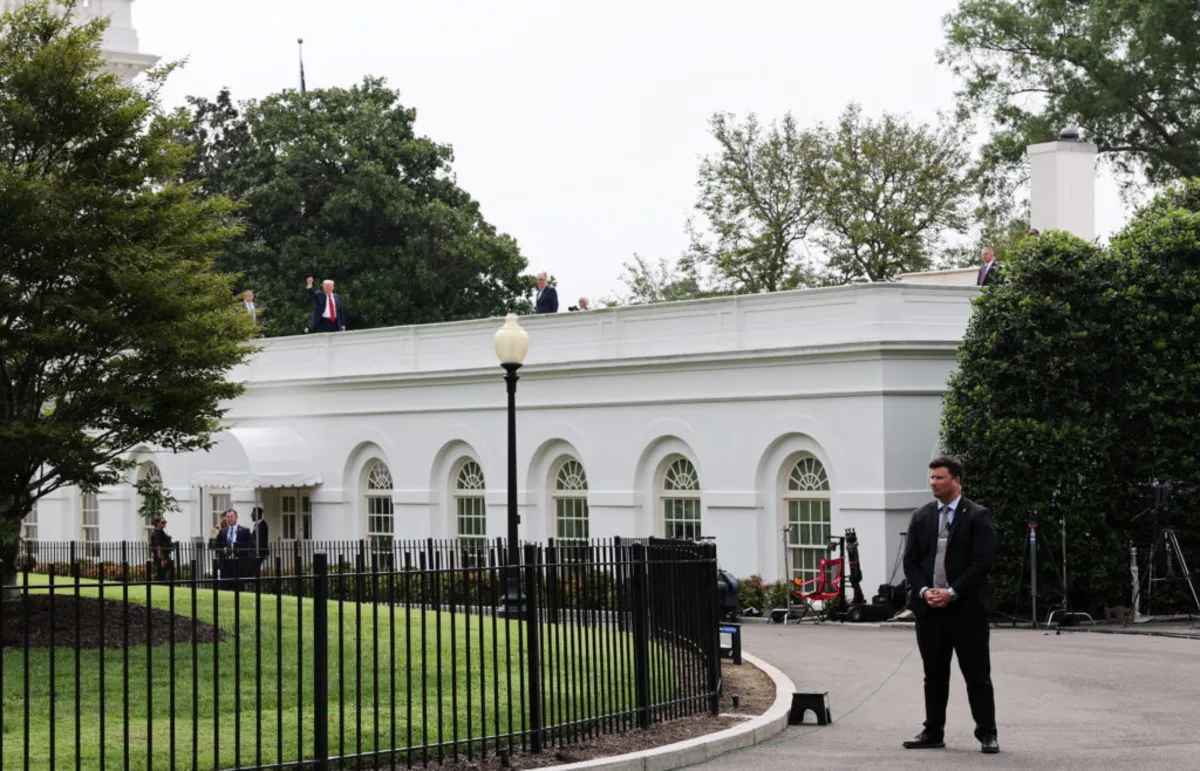
This week marked a significant milestone as construction commenced on the $250 million ballroom that President Donald Trump is adding to the White House. Construction crews have started tearing down the facade of the East Wing, the location designated for the new space. Initially, top White House officials, including Trump, had stated that no part of the building would be demolished during this project.
The proposed ballroom will cover an impressive 90,000 square feet, making it nearly double the size of the main White House itself. Trump has stated that the venue will be capable of accommodating 999 guests. He proudly claimed on social media that the construction will not burden taxpayers, as it is funded entirely through private donations from “many generous Patriots, Great American Companies, and, yours truly.”
Trump articulated his reasoning for the ballroom, emphasizing the need for a larger entertaining space at the White House. He noted that the current largest venue, the East Room, only holds about 200 people, which he finds insufficient for state dinners and large events. Historically, the practice of hosting such occasions in tents on the South Lawn has been met with his disapproval.
According to Trump, the entire $250 million construction cost will be covered through private donations, ensuring that no public funds will contribute to the ballroom's development. The White House has indicated that they will release details regarding the individuals and corporations backing the project. Notably, a significant portion—about $22 million—is tied to a settlement from a lawsuit with YouTube, a subsidiary of Google. The exact amount of Trump's personal financial contribution remains undisclosed.
The East Wing, traditionally recognized as the social hub of the White House, is being modified to make way for the ballroom. This area, located across East Executive Avenue from the Treasury Department, is typically where tourists and guests enter for events. Previously, Trump and his spokesperson, Karoline Leavitt, claimed that the White House would remain intact. However, as construction progressed, it became clear that some demolition was necessary as part of the modernization efforts related to the ballroom project.
Despite moving forward with this ambitious construction, Trump has not yet received approval from the National Capital Planning Commission, the agency responsible for overseeing construction and major renovations of government properties in the area. Trump appointed Will Scharf, a senior aide, to head the commission, which has drawn a line between demolition and rebuilding, stating that only the latter requires formal vetting.
In Trump’s vision, the East Room will transition into a mingling space for guests, where they can enjoy cocktails and hors d'oeuvres before proceeding to the ballroom for dinner. Plans include the removal of certain windows to facilitate a passageway connecting the two spaces.
Renderings released by the White House suggest that the new ballroom will bear a striking resemblance to the lavish ballroom at Mar-a-Lago, Trump’s private estate in Palm Beach, Florida. The capacity of the ballroom has increased from an initial plan to host 650 guests to now accommodating 999 guests, which Trump mentioned would be spacious enough to host a presidential inauguration if needed. Additionally, he stated that the windows would be bulletproof, adding an extra layer of security.
The White House has set an ambitious target for the ballroom’s completion, aiming for it to be ready for use before the end of Trump’s second term in January 2029.
Trump has already made several alterations to the White House, including a significant redecoration of the Oval Office with numerous portraits, busts, and gold-toned accents. He also transformed the Rose Garden into a stone patio, installed flagpoles on the north and south lawns, and adorned an exterior wall with portraits of every president except for his immediate predecessor, Democrat Joe Biden. Notably, he renovated the bathroom in the Lincoln Bedroom and added marble flooring in a passageway leading to the South Lawn.
The White House has undergone numerous expansions and renovations since its construction began in 1792. Trump’s decision to build a ballroom is touted as a continuation of this long-standing tradition. Previous projects, while often criticized for their costs and extravagance, have eventually been accepted by the public. Historical additions include the east and west colonnades by Thomas Jefferson, the North Portico by Andrew Jackson, and substantial renovations under Harry Truman due to structural concerns.
Through these changes, the White House continues to evolve, reflecting both the needs and the personalities of its occupants.